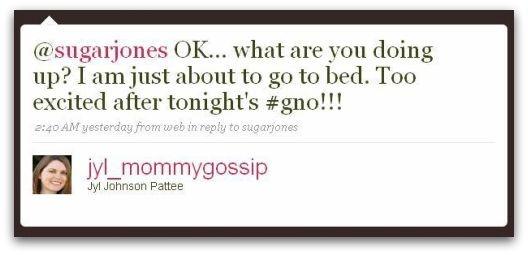About
A hashtag refers to a word, or phrase without spaces, prefixed with a hash symbol[1] (#) that is widely used on social networking and media-sharing platforms as a metadata tag to group together and keep track of multimedia discussions on a given subject or topic. Since being popularized through Twitter in the late 2000s, hashtags have been adopted by many other major online communities and have entered usage in offline conversations as well.
Origin
The use of hashtags began on IRC networks, whose chat rooms all begin with a hash symbol followed by the topic name. However, in this situation, the chat is limited to participants who appear in the room and can expand upon different topics as the conversation flows. Using a hashtag to collect posts across an entire social network was first suggested for use on Twitter by Google user experience designer Chris Messina[2] on August 23rd, 2007.[3]
how do you feel about using # (pound) for groups. As in #barcamp [msg]?
— Chris Messina™ (@chrismessina) August 23, 2007
Messina followed up this tweet with a blog post[4], fleshing out an idea for Twitter Tag Channels, building ways for people to have a discussion without the need for @ replies. He used March 2007’s South by Southwest (SXSW) Interactive as an example, noting that if hashtags had been implemented, people who were not necessarily following each other could follow tweets containing information and experiences of South by Southwest with the hashtag #sxsw. A proposal page linking to other blog posts advocating for the use of Tag Channels was also established on Twitter Fan Wiki.[5] Five days later, on August 28th, 2007, web anthropologist Stowe Boyd coined the term “hash tag” in a blog post[9] arguing for tag support.
Spread
Though tag search was not initially fully implemented, by October 2007 self-proclaimed web chef Nate Ritter[6] used a tag to keep family and friends updated during the San Diego wildfires.[7] For twelve hours, he tweeted consistent news updates with the hashtag #sandiegofire, gaining attention from a number of news sites and blogs.[8]
Hashtags were not immediately embraced by everyone, as evidenced in a 2008 blog post by content strategist Dave Coustan.[10] He claimed that he would be unfollowing anyone who used hashtags, as the searchable metadata aspect of them made Twitter communication seem less human to him. Despite this, hashtag use increased in 2008, as many people, including tech-savvy moms, held virtual parties through the tags.[11] As early as November 2008, bloggers from Mommy Gossip (now Mom It Forward) began a weekly Twitter “Girls’ Night Out” with the hashtag #gno.[12] Held for two hours on Tuesday evenings, #gno allows women from around the globe chat with their peers about topics including health, parenting, food and travel. As of June 2013, the hashtag has been used more than 192,000 times.[13]
In early 2009, instructions on how to use hashtags began appearing on tech blogs including Tech For Luddites[14], It’s All Geek to Me[15] and Mashable.[16] In April 2009, the first negative hashtag began to circulate following Amazon’s appearing to remove LGBT-themed books from the top charts after they were erroneously marked as “adult.” Twitter users lashed out at the site with the hashtag #AmazonFail[17], which was later discussed on NPR’s blog Monkey See[18], Metafilter[21], the Wall Street Journal[22] and Seattle Pi.[19] The glitch was quickly fixed, thanks to the attention from tweeters. Internet researcher Clay Shirky later analyzed the event on his personal blog[20], calling the hashtag’s spread a failure overall, as many posters were simply jumping to conclusions, but also an “intoxicating” experience. As of June 2013, the hashtag has been recycled on several occasions, with more than 16,000 total uses.[23]
Oranges are Not the Only Fruit AND The Well of Loneliness both lose their Amazon ranking? Complete and utter #amazonfailhttp://bit.ly/JoVF
— Neil Gaiman (@neilhimself) April 12, 2009
On January 4th, 2013, the American Dialect Society[24] chose “hashtag” as the 2012 Word of the Year, beating out other contenders “YOLO,” “fiscal cliff” and “marriage equality.” Though the word was not on the official nominees list, the group of more than 250 linguists, lexicographers, grammarians and historians agreed on its importance in American language.
Usage
Some of the most notable hashtag-enabled platforms and websites include:
On June 12, 2013 Greg Lindley announced on the Facebook blog[25] that the social networking site would be incorporated hashtags into public posts. Prior to this announcement, there was no way for people to engage with trending topics like television shows and sports events with people outside of their friend network. Not only would it work with in-site posts, but with tags from other services including Twitter and Instagram. The service began rolling out that day, expected to reach all users within a few weeks.[26]
Search Interest
External References
[1]Wikipedia – Number sign
[2]Twitter – @ChrisMessina
[3]Flickr – twitter.com/factoryjoe/statuses/223115412
[4]Factory City – Groups for Twitter; or A Proposal for Twitter Tag Channels
[5]Twitter Fan Wiki – TagChannels
[6]Twitter – @nateritter
[7]Wikipedia – October 2007 California wildfires
[8]Nate Ritter – HELPINGPEOPLEEVERYWHERETHROUGHTHESANDIEGOFIRES
[9]Stowe Boyd – Hash Tags = Twitter Groupings
[10]Extraface – Why I Unfollow People Who Use Hashtags On Twitter
[11]Mashable – Hashtag Happy Hours: How Moms Party Down on Twitter
[12]Mom It Forward – about #gno
[13]Topsy – Tweet statistics for #gno
[14]Tech For Luddites – The Twitter Hash Tag: What Is It and How Do You Use It?
[15]It’s All Geek to Me – twitter 301 -- hashtags explained
[16]Mashable – HOW TO: Get the Most Out of Twitter #Hashtags
[17]Twitter – Tweet results for #AmazonFail
[18]Monkey See – Amazon Learns A Painful Lesson About The Twitter Hashtag
[19]Seattle Pi – AmazonFail: An inside look at what happened
[20]Clay Shirky – The Failure of #amazonfail
[21]Metafilter – AmazonFAIL
[22]Wall Street Journal – Blogs and Twitter Coin “AmazonFail”
[23]Topsy – Tweet Statistics for #amazonfail
[24]American Dialect Society – “Hashtag” is the 2012 Word of the Year
[25]Facebook – Public Conversations on Facebook
[26]The Verge – Facebook rolling out hashtag support starting today


